Initially established to help Japan cope with the difficulties of building houses in the post-war era, Sekisui House has played a key role in the popularization of prefabricated homes and is today regarded as a major industry player.
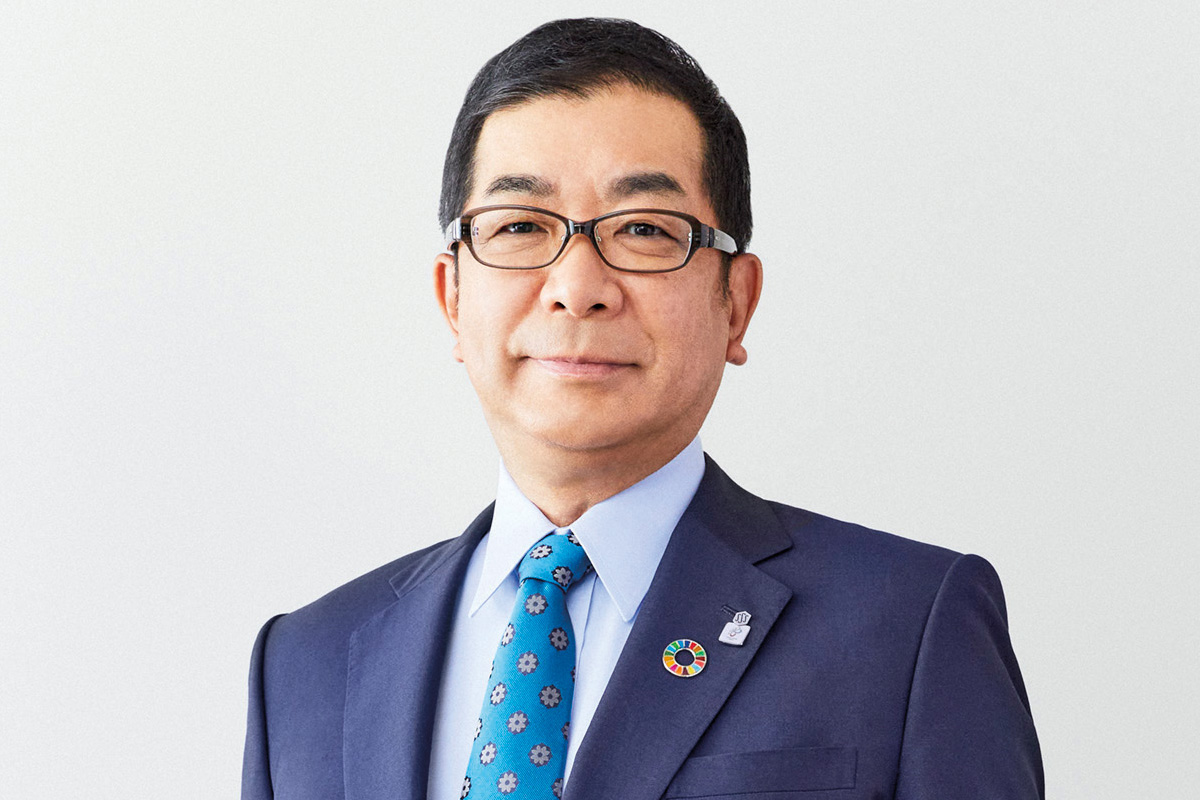
Japan’s last construction boom was over 50 years ago prior to the 1964 Olympic Games, and nowadays, many buildings are aging and do not meet the standards for earthquake resistance. Furthermore, due to Japan’s aging demographic, there is less need for newer construction projects. What is your assessment of Japan’s current housing market and its needs for the years to come?
One think tank reported that the number of new houses will be less than 600,000 by 2030, but personally, I have a different opinion. I think until 2030 we will be able to maintain a level of around 800,000. Looking at the stock of existing detached homes in Japan, 29% do not meet standards for earthquake resistance and 11% do not meet insulation standards. Japan is well known for its earthquakes and its extreme climate change but there are still a lot of houses that do not meet these standards, which is why I feel there is demand for house rebuilds. As evidence of this, the government announced that they will strengthen the standards for earthquake resistance and insulation by 2025.
As Japan’s population declines, there has been a trend of urbanization as elderly people are moving to larger cities like Tokyo or Osaka, with the reasons being convenience and to be close to medical services. How do you think this will impact home building in metropolitan areas?
As you mentioned, I also believe that city populations will increase going forward, and people that want convenience will inevitably gather in urban metropolitan areas. As a result, I think we will see a lot of high-story buildings, however, if cities become more compact, there will be needs coming from families that really need larger spaces to raise their children. These people may then turn to suburban areas.
When it comes to prefabricated housing, the advantage is the limited amount of construction work required, thus shortening lead times and guaranteeing high-quality housing standards for residents. In Japan, Sekisui House has played a key role in the popularization of prefabricated homes, especially in the post-war era, leading the housing industry with initiatives that were seen as industry firsts, such as the adoption of metric specifications. As such, you are viewed as one of the world’s leading house builders in prefabrication. As a leader in this regard, what are some of the other advantages of prefabricated housing?
Sekisui House was founded to help Japan with its difficulty in building houses after WWII, and the company pursued pre-engineered houses so that we could build houses at high speed. Rather than just focusing on the speed at which we built houses, we also placed significant importance on saving the lives and assets of the people who actually live in them.
There are some other competitors in terms of pre-engineered or prefabricated houses, but in terms of the standards for earthquake resistance, we have always been a little bit ahead of the competition. We always try to be one step ahead of the actual standards, so in a sense, you could say that our own company standards are stricter than those of the Japanese government. Every time a major earthquake happens, the standards are raised, meaning that our current standards will continue to meet the government standards. We then apply stricter standards for ourselves and this cycle continues to repeat. We try to make sure that our company is always one step ahead of others in our field. By doing so it enables us to lead the industry.
There are two notable characteristics of our pre-engineered houses. One is that we have introduced robotics into our factories and we have also promoted automation through the introduction of new equipment and AI as well as DX. What we are trying to do is strengthen the materials and structure of the houses in order to maintain our levels of quality. The other notable characteristic is that we use our wholly owned subsidiary Sekisui House Construction Group to do the foundations for houses. That is because the foundation is the most important part of a house and we simply cannot trust an outsourced company to do it. As a result, in the 1995 Great Hanshin-Awaji Earthquake and the Great East Japan Earthquake of 2011, we did not have any houses that were destroyed due to earthquake shaking, either completely or partially.
One type of home we know you have is SHAWOOD, a highly engineered home that can withstand harsh natural conditions, and each SHAWOOD home is tailor-made to suit individual lifestyles. Can you tell us a little bit more about the concept of SHAWOOD and why potential prospects should choose a SHAWOOD home?
We have made great efforts to improve our earthquake resistance standards, and there have been technological developments in steel construction. However, as you can see in the temples or the shrines that are in Kyoto, all of these traditional buildings and houses are made of wood. Japanese people feel very passionately about living in wooden houses and there is a need for these kinds of houses in the market. The weakness of these older-style wooden houses is the joints, which are not strong, so we developed our own technology to cover that weakness, which is called the Metal Joint System. It is a hybrid of wood and metal to strengthen the structure itself. This is the basic concept of SHAWOOD.
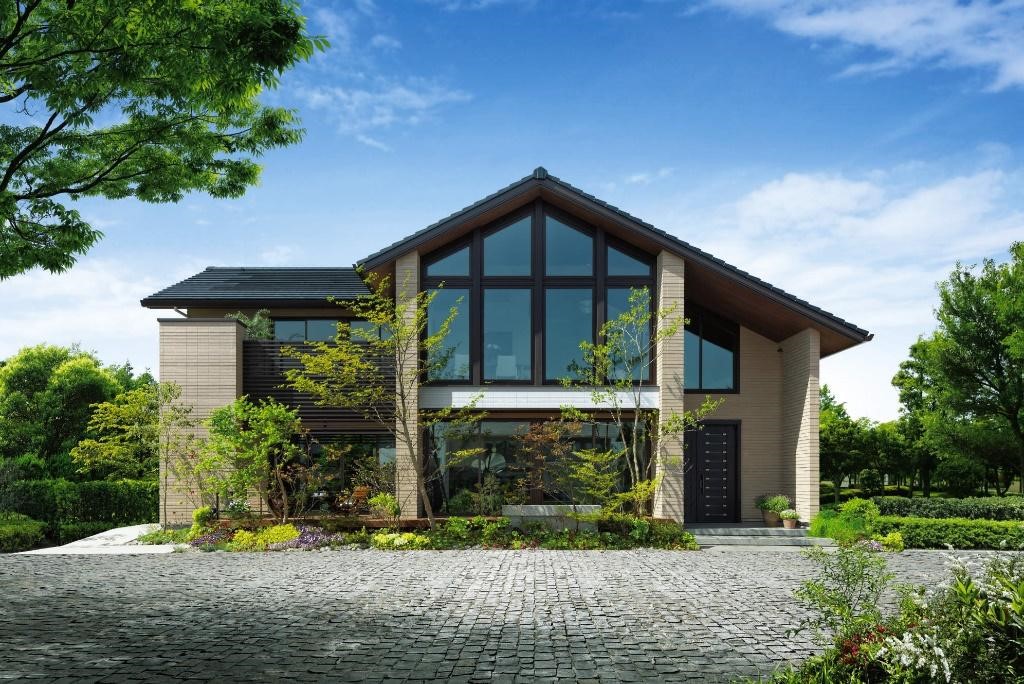
SHAWOOD (Japan)
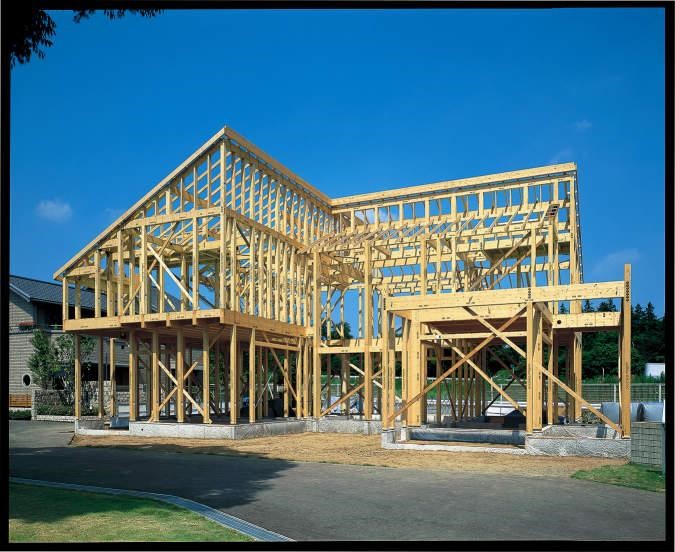
SHAWOOD (Japan) Structure
As you mentioned, SHAWOOD takes advantage of the Metal Joint System. Are you looking to apply this innovative construction method to the non-housing sector? How can you adapt this technology to suit international markets such as the United States, where the environmental conditions differ from Japan?
Our company conducts a wide variety of research into housing, not just structural safety. We have many technologies to make life comfortable for all types of residents, including air quality and what we call universal design, which makes it easy for everyone from the elderly to children to live in a barrier-free environment. Therefore, we naturally receive requests to build facilities where people live. For example, for hotels, kindergartens, nurseries, and other facilities where people spend time inside, the comfort of these facilities is the reason why people seek us out. In order to meet these needs, we are also actively expanding into non-residential buildings.
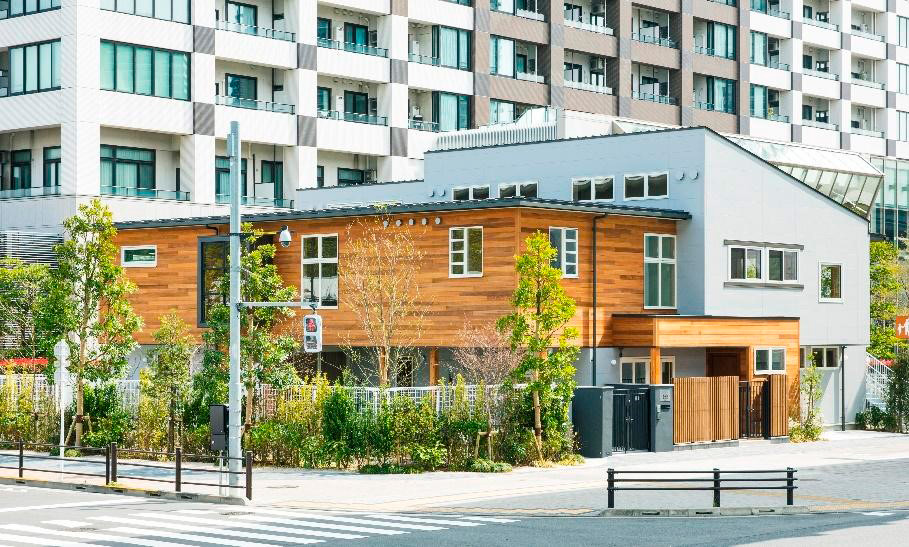
Nursery School built with the SHAWOOD method
In the United States, there are a lot of technologies that we think we can apply to that country such as earthquake resistance or heat insulation, fire resistance, and impact resistance. Universal design is another technology that we think is applicable there, however, we need to research the different needs and markets in each state to find out which technology is most needed.
The characteristic of SHAWOOD that we believe will be received best by the United States is its flexibility for designs and the large spaces it allows. I have confidence that any state in the US will appreciate this kind of technology. Something that is not understood well by the global market is that we offer tailor-made houses and 98% of our houses are built to order. Typically, in the US, houses are built to predetermined designs.
Sekisui House became the first company in Japan to research happiness when it established the Human Life R&D Institute. This research has resulted in a unique value-added proposition of designing optimal living spaces where families can spend time together in a shared space, while also spending time on their own. You have called this concept the Family Suite. Can you tell us a little more detail about how the Human Life R&D Institute develops new living styles, such as the Family Suite concept, and how you believe this concept will strengthen the family unit overall?
Historically, especially before World War II, Japanese families lived in small rooms in small houses, and they would gather in one room for meals. When Sekisui House was founded, the company supplied many houses with floor plans that had separate rooms to meet the demand for separate living rooms, kitchens, children's rooms and so on. However, as times have changed, we have had to change due to the way people use these houses. We looked at how people were using them and found some interesting results. Some families use the rooms for storage, others have children reading books in the living room instead of in their own rooms. Based on this research, the Human Life R&D Institute developed the Family Suite.
The concept of Family Suite is well accepted and more than 60% of families take up this concept. I think this is a way to make the families happy through our houses. We provide a large room where family members can gather together as they used to in the past, but we now supply a larger space, and people use that space to watch TV, read books, and even cook. The whole family is together in one space with each individual doing different things, yet they can all see each other, interact, see how each other’s feelings change and see their expressions. That will lead to more conversations between family members and I feel that is a great way of bringing happiness to a family unit.
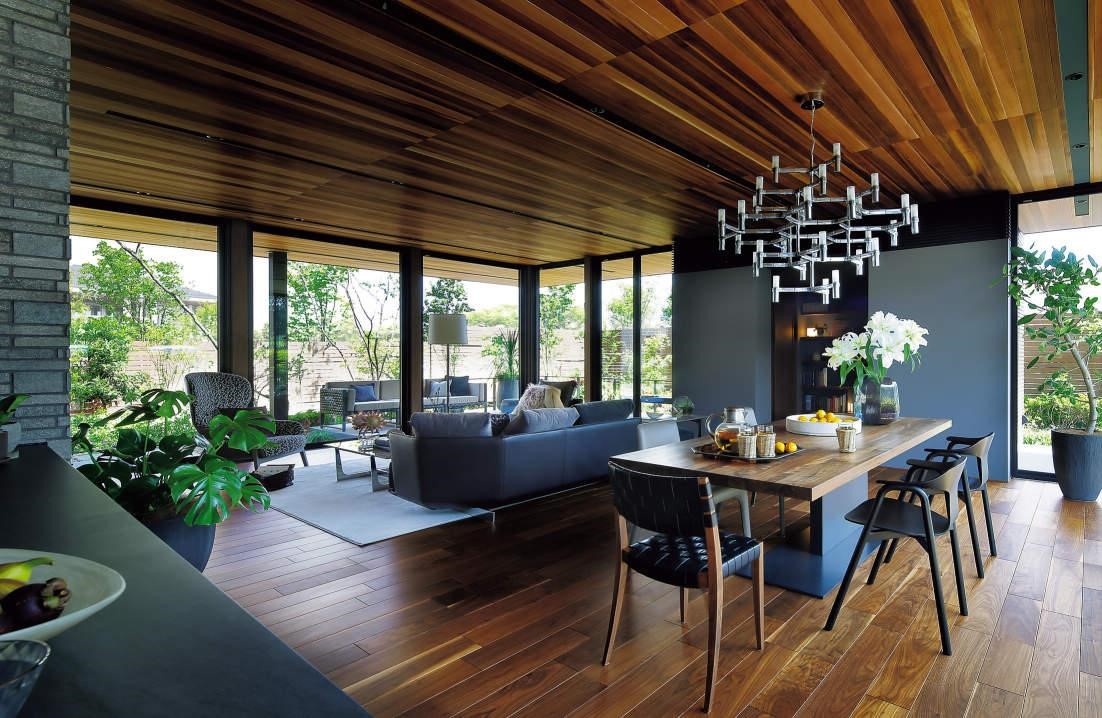
FamilySuite
You launched the PLATFORM HOUSE Touch smartphone app in December 2021, which allows residents to remotely check conditions in the rooms of their homes and it is part of the wider PLATFORM HOUSE concept. Considering this app is the first step of the PLATFORM HOUSE concept, what is your roadmap to further develop this concept, and are you planning on developing further digital services designed specifically for residents?
By launching this application, we are now able to secure a higher level of security. People could be able to access and hijack home Wi-Fi networks but we have been able to prevent such situations by incorporating edge computing techniques. With the use of this technology, we can collect data regarding the usage of things around the house such as when windows are opened and closed, what time doors are opened, and when people in the house are likely to open or close shutters. In addition, air conditioning, boiler, bathroom and room temperature and humidity logs can be collected. Take an air conditioner as an example, we can get data on what time the unit is turned on, what temperature it is often set at, and how long users leave it on. We can take that knowledge to paint a more vivid picture of a family living in a house and discover their behavioral patterns.
You mentioned that this is the first step, and the second step will be to take this data collection to the next level by monitoring the vitals of the occupants inside the house. Things like blood pressure, pulse, and number of breaths. By collecting all of this data, we will be able to offer new services such as preventative medicine or suggestions on lifestyle changes.
Sekisui House is composed of a number of different group companies and each one brings unique expertise to your business operations, from real estate and renovation to construction and civil engineering. What are some of the synergies that you are able to generate among your group companies and what are your plans for the future expansion of the group?
Although you said that we have a lot of different businesses, those businesses are all in the housing sector. Specifically for our business model, we first have a business that constructs tailor-made houses and we also have a business to maintain the stock of houses we supply. These two businesses generate cash, which is then used to invest in non-residential property, particularly for urban development to create better cities. By doing so, the hope is to receive returns on those investments and all of these businesses as you can see are related to housing. With this cycle, we are trying to achieve an organic value chain.
You asked about whether we are going to expand the group and we definitely would like to if the possibility is there. As discussed earlier, we just launched the PLATFORM HOUSE Touch app, and with that we are collecting a lot of big data. From that, we can then start providing new services, but there may be instances where we lack the ability to offer a service or technology. In that situation, we would look to M&As in order to provide those services to our customers.
In Japan, we have supplied 2.5 million houses including detached houses and condominiums. If we assume that on average four people are living in each home, it means that we have provided homes for 10 million people in this country. We are responsible for coming up with services that best serve these 10 million people. We actually applied to the Guinness Book of World Records, but they did not accept it saying that there was insufficient evidence.
Recent sustainability initiatives have meant that zero-energy houses (ZEH) have gained wider attention, and the US market is familiar with zero-energy ready homes (ZERH), energy efficient houses where a renewable energy system can offset most of their annual energy usage. As a pioneer in ZEHs, how do you plan to introduce 100% zero-energy homes to markets such as the United States? What benefits do ZEHs have over ZERHs?
When thinking about ZEHs in Japan, their purpose or aim is to make the consumption of energy equal to the generation of energy by the house. With ZEHs in the US, homes are pre-wired so that solar panels can be fitted sometime in the future. You can see that there is a difference between the concepts.
When we try to introduce Japanese ZEHs to the US, the main purpose is going to be to achieve zero carbon emissions, but we are still not sure if this is really needed in the US where electricity costs are still quite cheap. In order to find the answer, we really need to do more research. Zero emissions and carbon neutrality are important topics for me.
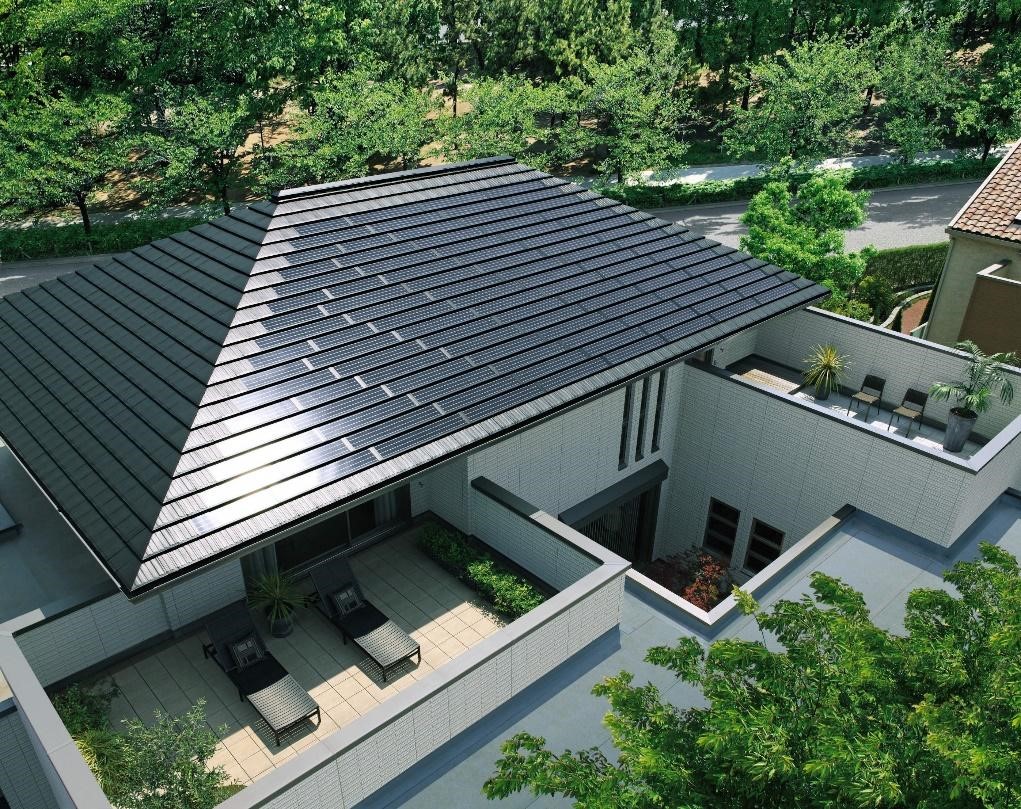
Zero-energy houses (ZEH) in Japan
In January 2020 at the International Building Show in Las Vegas, you built the harmony-themed Chōwa concept home, which was extremely well received. Given its warm reception, what design concepts or technology do you plan to showcase at your next exhibition?
For that exhibition, we shipped everything including every single board from Japan so that we can demonstrate Chōwa as it should be. As you mentioned, it was well received. We purchased 6 lots adjacent to the Chōwa concept home and built houses there. They were also well received and each of these six homes have been sold. We actually did not spend a lot of money on marketing and promoting these houses before they were sold, which meant that the houses spoke for themselves. The characteristics of the design are the expansive living spaces we can achieve in the home because there are fewer beams. In the state of California, there is a requirement that homebuilders and developers install solar panels on their homes. As you know, California is known for its wildfires, so because of that, there are planned power outages. If that happens, people cannot work from home because electricity is not supplied. This year, we will build an additional three zero-energy display homes. I think this is going to differentiate us from the competitors because no other builder in the US builds these kinds of homes.
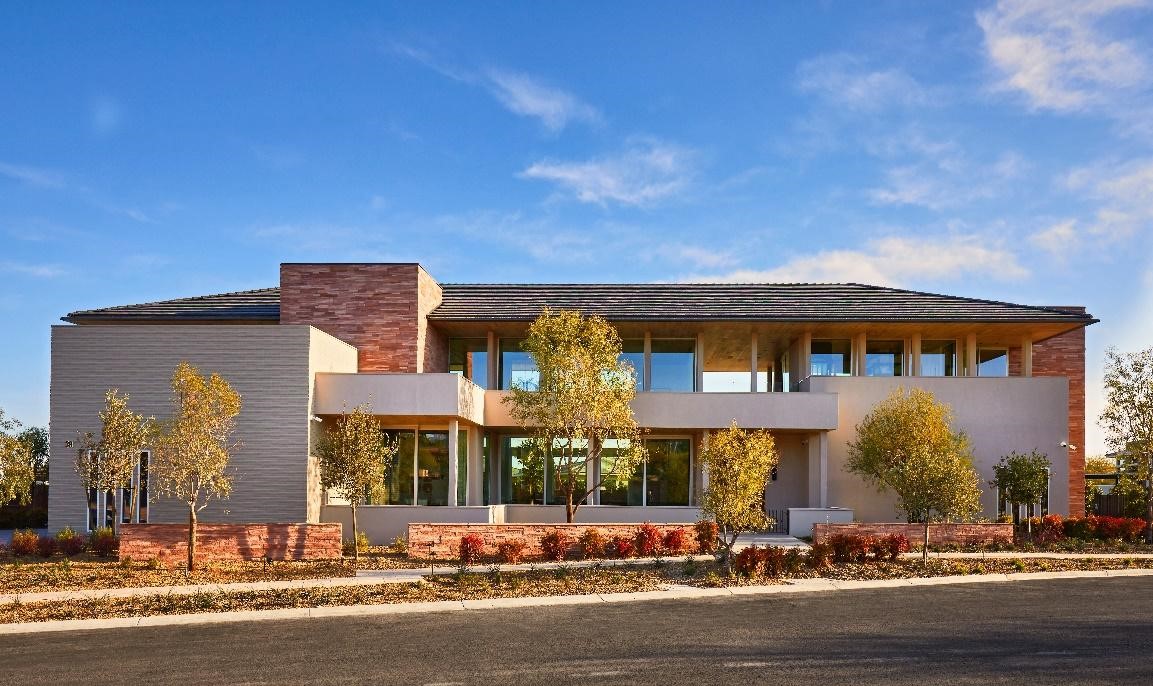
Chōwa
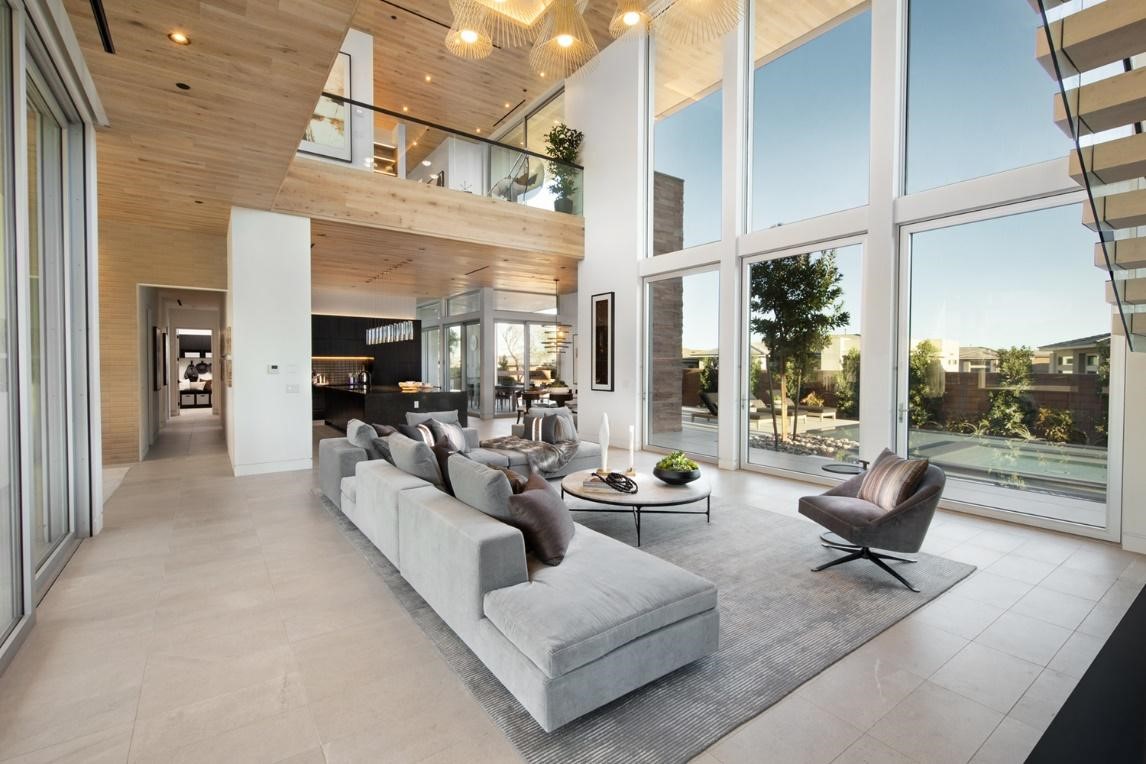
Chōwa
Sekisui House aims to supply 10,000 houses overseas by the year 2025, so with only two and a half years left to reach this target, are you on track to achieve it?
We have good prospects to achieve 7,000 so far, but in order to achieve 10,000, we probably need to do more M&As with builders or look to other countries. If we were to select another country, the criteria would include whether there is a need for our technology for earthquake resistance. The other prerequisite is about the market, and we are targeting middle- to upper-class families. We would like to see whether there is the prospect for that kind of population to grow.
In that sense, we believe that the closest way to achieve that 10,000 goal is to have some more M&As in the USA, which has a strong economy. When we choose a partner for M&As, we would like to find a like-minded company that understands our philosophy and is also looking to increase the stock of high-quality houses around the world. We have great alignment with our existing three partners so we would like to find more companies like this for potential M&As.
You acquired Woodside Homes in 2017 as a way to enter the consumer homebuilding market, followed by the concept home in Las Vegas in 2020. Due to positive reception, you are now building 57 homes in Southern California, with the hopes of starting sales in Autumn 2023. You have just discussed M&As, but how else do you plan to continue to grow in the US market?
We will take two different approaches to exporting Japanese technology to the US. One method is to embed Japanese technology into conventionally built homes, and the other is to bring the SHAWOOD method as it is. With these two methods, we would like to continue to expand in the US market.
The other business we do internationally in the United States, Australia, and Singapore is related to condominiums and it is actually going well. This business is a development-type business where, for example, a large condominium building of around 300 units is sold in its entirety. I am sure you are aware of our Compact City concept where there are more condominiums in the center and more detached homes in the suburbs. We believe that if we were to pursue this concept in the US, we can be successful.
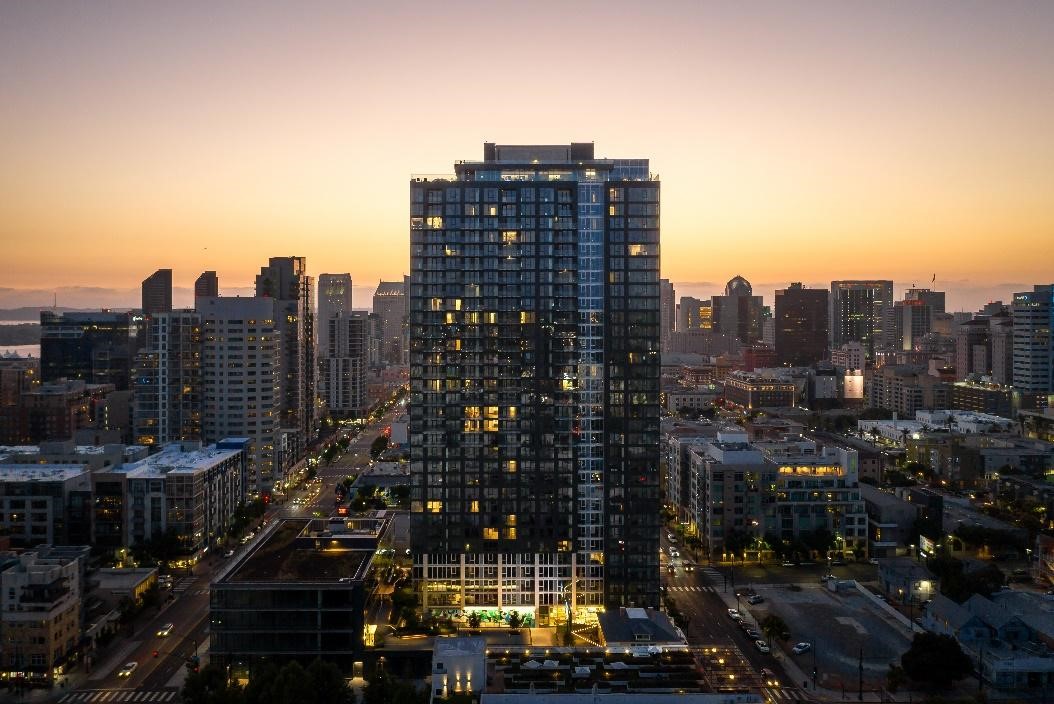
The Merian
©2022 Steven J Magner Photography, LLC | ALL RIGHTS RESERVED
Sekisui House’s 6th mid-term management plan starts this year, and it outlines the development of new businesses including DX for rental housing, the PLATFORM HOUSE concept, as well as strengthening customer relationship management (CRM). What new areas do you want to focus on in the future and how do you plan to make this 6th mid-term management plan a success?
As I mentioned when we were talking about the PLATFORM HOUSE Touch, we are trying to gather big data about families, but that is going to apply only to houses that will be built going forward. We have already supplied 2.5 million homes and there are around 10 million people living in these homes. We are trying to find ways to collect data for these 10 million people who already have our houses so that we can make a database of them.
The other thing we are trying to work on relates to potential customers. Every year, around 300,000 people visit our display homes or events to learn about our houses. That means that 300,000 people a year are looking to build a house at some point in the future. We would also like to make a database for these potential customers too, with the intention of developing effective CRM strategies.
In our mid-term management plan, we saw a rise in the cost of materials, and that impacted our operating profit by about JPY 45 billion, but we were able to absorb that impact by using our business strategy, thus we were able to quickly recover. For that reason, the new mid-term management plan really does not deviate from the previous one. We have evidence to suggest that as long as we supply good houses and good products, then there will be customers to purchase them.
Sekisui House is one of Japan’s leading home builders, providing jobs for over 14,000 employees. What do you expect from your employees and what role do they play within Sekisui House?
Looking into the whole group, we have around 29,000 employees in total, and I often tell these 29,000 employees about my vision for the next 30 years. Our global vision is to make home the happiest place in the world, and in order to achieve this goal, happiness needs to start with the employees. First, the employees need to be healthy and they need to be able to make their families and friends happy also. They should be able to build their career by themselves. If we can achieve this, it will lead to the company's growth, which in turn will lead to more of our value proposition for our customers.
Interview conducted by Karune Walker & Sasha Lauture
0 COMMENTS